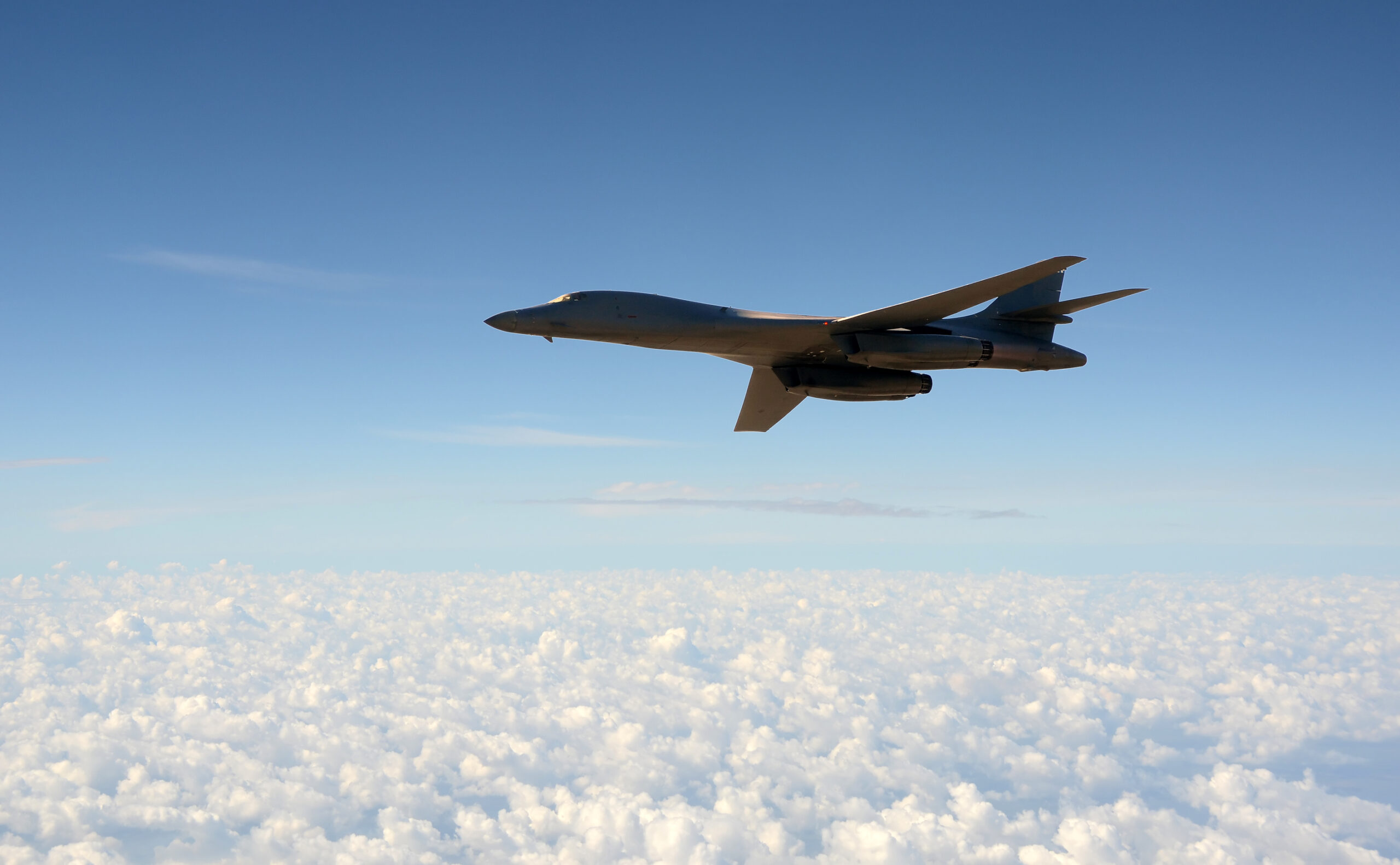Current U.S. nuclear policy, known as “calculated ambiguity,” neither confirms nor denies the possibility of American forces initiating a nuclear first strike.[1] However, recent geopolitical developments, including the evolving nature of warfare and growing concerns about nuclear nonproliferation and conflict, call for a reassessment of this policy.[2] This article examines the reasoning behind the calculated ambiguity doctrine and explores a “no first use” policy as a suitable alternative that may better safeguard U.S. national security interests and promote global stability.
Calculated ambiguity is based on the idea that the uncertainty of whether the U.S. would initiate a nuclear strike serves as a deterrent against potential adversaries.[3] By remaining ambiguous about its intentions, the U.S. hopes to prevent adversaries from launching nuclear or conventional attacks due to the fear of a devastating nuclear response.[4] While this policy may have been effective during the Cold War, it has become increasingly problematic for several reasons.
First, calculated ambiguity heightens the risk of nuclear escalation due to miscalculation.[5] In a crisis, adversaries may perceive ambiguous signals or military movements as evidence of an impending nuclear first strike, prompting them to contemplate a preemptive nuclear attack of their own.[6] This uncertainty increases the likelihood of a swift escalation from conventional to nuclear conflict fueled by a fear of being blindsided by a devastating first strike.[7]
Second, the policy undermines nuclear disarmament efforts.[8] Calculated ambiguity perpetuates the perception that the U.S. regards nuclear weapons as a legitimate means to achieve its strategic objectives.[9] It undermines the credibility of American nonproliferation initiatives and weakens the global precedent against using nuclear weapons.[10] Moreover, the policy encourages other nuclear-armed states to develop their own first-strike capabilities, triggering a destabilizing arms race.[11]
Conversely, a “no first use” policy provides a more stable and responsible approach to nuclear deterrence. Under this policy, the U.S. would publicly commit to never using nuclear weapons first, reserving their use solely for retaliation in response to a nuclear attack.[12] Clearly stating that the U.S. nuclear arsenal is solely for deterrence significantly reduces the risk that adversaries will inadvertently escalate a crisis due to misinterpreting U.S. intentions.[13]
A no first use policy would maintain the effectiveness of U.S. nuclear deterrence.[14] Mutually assured destruction—the threat of nuclear retaliation—is a powerful deterrent.[15] The U.S. possesses a robust and survivable nuclear arsenal, including submarine-launched ballistic missiles, ensuring a credible second-strike capability in the event of a surprise attack.[16] Adopting a no first use policy would demonstrate the U.S.’s commitment to diminishing the role of nuclear weapons in its national security strategy without sacrificing its most potent deterrent.
By adopting a no first use policy, the U.S. would join other nuclear power like China, which has maintained an unconditional no first use policy since it first developed nuclear weapons.[17] India also has a no first use policy, reserving the right to use nuclear weapons only if attacked with biological or chemical weapons.[18] Even the former Soviet Union adhered to a no-first-use policy for an extended period.[19] Transitioning to a no first use policy could potentially encourage other nuclear-armed states to follow suit, fostering a more stable international environment and reducing the likelihood of nuclear conflict.[20]
Finally, a no first use policy would strengthen U.S. nonproliferation efforts, signaling to non-nuclear states that the U.S. takes its obligations under the Treaty on the Non-Proliferation of Nuclear Weapons (NPT) seriously.[21] By diminishing the perceived utility of nuclear weapons in its security strategy, the U.S. can set a powerful example for other nations to follow.[22] Leading by example, the U.S. would encourage non-nuclear states to uphold their NPT commitments and dissuade them from seeking their own nuclear capabilities.[23]
Overall, adopting a no first use nuclear policy would represent a significant advancement for U.S. nuclear doctrine, enhancing global stability and reducing the risk of nuclear escalation.[24] By committing to a no first use policy, the U.S. would signal to the international community that it views nuclear weapons as instruments of deterrence, not aggression.[25] This policy change would invigorate disarmament efforts and lend credibility to nonproliferation treaties.[26] Ultimately, adopting a no first use policy would reaffirm the role of the U.S. as a responsible global leader dedicated to creating a safer, more secure world.[27]
[1] George Perkovich and Pranay Vaddi, Toward a Just U.S. Nuclear Declaratory Policy, Arms Control Association (Mar. 2021), https://www.armscontrol.org/act/2021-03/features/toward-just-us-nuclear-declaratory-policy.
[2] Thomas Graham Jr., The Role of Nuclear Weapons: Why Biden Should Declare a Policy of No First Use, Just Security (Sept. 29, 2021), https://www.justsecurity.org/78375/the-role-of-nuclear-weapons-why-biden-should-declare-a-policy-of-no-first-use/.
[3] Nina Tannenwald, It’s Time for a U.S. No-First-Use Nuclear Policy, Texas National Security Review (Aug. 1, 2019), https://tnsr.org/roundtable/its-time-for-a-u-s-no-first-use-nuclear-policy/.
[4] Id.
[5] Graham, supra note 2.
[6] See Tannenwald, supra note 3.
[7]“No First Use” Talking Points, Physicians for Social Responsibility, https://psr.org/wp-content/uploads/2019/04/no-first-use-talking-points.pdf.
[8] See Ankit Panda, ‘No First Use’ and Nuclear Weapons, Council on Foreign Relations (Jul. 17, 2018), https://www.cfr.org/backgrounder/no-first-use-and-nuclear-weapons.
[9] See Tannenwald, supra note 3.
[10] See id.
[11] Id.
[12] No-First-Use Policy Explained, Union of Concerned Scientists (May 7, 2020), https://www.ucsusa.org/resources/no-first-use-explained.
[13] Id.
[14] Fact Sheet: The Nuclear Triad, Center for Arms Control and Non-Proliferation (Jan. 21, 2021), https://armscontrolcenter.org/factsheet-the-nuclear-triad/.
[15] Duncan Richter, Mutually Assured Destruction, Philosophy Now (2002), https://philosophynow.org/issues/37/Mutually_Assured_Destruction.
[16] Center for Arms Control and Non-Proliferation, supra note 13.
[17] Should America rule out first use of nuclear weapons?, The Economist (Aug. 15, 2019), https://www.economist.com/united-states/2019/08/15/should-america-rule-out-first-use-of-nuclear-weapons?utm_medium=cpc.adword.pd&utm_source=google&ppccampaignID=17210591673&ppcadID=&utm_campaign=a.22brand_pmax&utm_content=conversion.direct-response.anonymous&gclid=Cj0KCQjwz6ShBhCMARIsAH9A0qXtZbABtPr4BWp2nj_IITLraDnLOfqsSgNqch43Op_BmfiP9lmQgI4aAnMzEALw_wcB&gclsrc=aw.ds.
[18] Tannenwald, supra note 3, n.6.
[19] The Economist, supra note 14.
[20] Physicians for Social Responsibility, supra note 5.
[21] See Nuclear Non-Proliferation Treaty, U.S. Department of State, https://www.state.gov/nuclear-nonproliferation-treaty/.
[22] See Tannenwald, supra note 3.
[23] See id.
[24] Id.
[25] See Union of Concerned Scientists, supra note 11.
[26] Tannenwald, supra note 3.
[27] See Graham, supra note 2.


